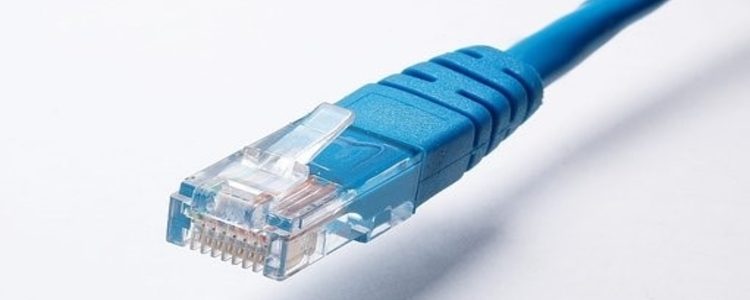Choosing the right type of internet connection for your business takes careful consideration. Both wireless and Ethernet options have their benefits and drawbacks. What is less commonly known is that the two technologies have different levels of cyber-security. Both styles of internet connection can offer stable and secure transmission, but there is additional information you’ll need to keep in mind. This article compares both Wi-Fi and Ethernet connections alongside their security pros and cons so you can make an informed choice for your business.
What is Ethernet
Ethernet cables connect computers to routers and switches. This connection allows the computers to access local area networks and the internet.
Speed
It’s true that wireless internet is much faster than it used to be, but Ethernet will still outpace it. Ethernet is faster because the data is converted between formats less often, and cables are not subject to interference. If you need to send a lot of data or the data is of critical importance, Ethernet is the better connection.
Reliability
Ethernet is certainly a reliable form of internet connection. If your internet provider is reliable, you have power and the cord is not unplugged, you should have a constant and consistent connection. Rely on this for uploading extremely large files or maintaining customer services provisions.
Physical safety
The downside to Ethernet is the physical requirement of the cords themselves. If you have an office with multiple workstations, you will need to manage the cabling that connects each one back to the server room. Additionally, connecting multiple stations with Ethernet cable can be expensive. It’s possible to find office space that has been pre-wired, which can mitigate the cost. Finally, you’ll need to ensure the extra cables do not pose an occupational health and safety risk for employees.
Wi-Fi – wireless internet connections
Wireless internet uses routers and switches to broadcast a signal through the air. Users must be in range of the signal and have the correct credentials to access the network.
Flexibility
Where Ethernet requires the user to be tethered to a workstation, wireless internet creates an inherently flexible workspace. It allows your team to move freely through the office and maintain a connection. Because there is no requirement to physically connect, Wi-Fi is also accessible to mobile devices.
Creates modern opportunities
When staff and devices were liberated from an internet cable, innovation created new opportunities. Wi-Fi can provide free connections for customers at cafes, and is particularly useful if your business has a ‘bring your own device’ policy. Wi-Fi creates flexibility for staff and enhances open or ‘hot desk’ offices. As the Internet of Things grows, wireless internet makes it easier for data to be sent to and from intelligent devices.
Time saving
Establishing a wireless network can take more time up front, especially the configuration stage. However, once it’s functional, it is a lot quicker to achieve goals on the go. Even simple tasks like sending an email can be done instantly, rather than waiting to return to a desktop. Efficiencies are also found in industry. Factories and construction sites, for example, can be a lot more responsive because decisions and authorisations can be made on the site floor.
Variable quality
Wireless connections are not universally reliable. They can experience interference, or be blocked by physical structures like walls (also known as ‘line of sight’ issues). For important, or data-heavy tasks, wireless may not always get you there. Wi-Fi requires data to changes formats a number of times and be broadcast using a radio frequency. Although inconvenient when they occur, these variabilities are infrequent enough that most day to day internet traffic can rely on Wi-Fi.
How do Ethernet and Wi-Fi compare on data security?
Wi-Fi can be considered the weakest option, despite concerted efforts to standardise security protocols. There are many actions that can be taken to protect data sent over a wireless network. IT support can establish VPNs and stringent password protocols, for example. User behaviour also greatly influences the security of data transmitted via Wi-Fi. Users must be made aware of the risks of accessing confidential data over unsecured public networks (such as cafes provide). Consider isolating guests and contractors from the company network by providing a second stand-alone Wi-Fi connection. A combination of behaviour management and attentive tech support will provide a relatively secure environment.
Ethernet is far more secure, primarily because of its method of data transfer. Data pushed through cabling cannot be eavesdropped on or intercepted maliciously as Wi-Fi can. Do not fall into the trap of assuming internet business conducted over Ethernet is immune from attack however. Social engineering is still the most common method hackers use to gain access to secure networks. That means phishing emails, fraudulent links and malware in attachments reach vulnerable employees. Thankfully, even these risks are moderated by being tethered to a larger screen at a desktop computer. Users are more likely to be tricked by phishing attempts on mobile devices, due to the smaller screens and distracted nature of use.
So which option should you choose for your business? It’s clear that both choices have benefits and drawbacks. Happily, knowing the weaknesses of each mode allows you to factor in extra protective or adaptive measures. In general, sensitive data and large loads should be transmitted with Ethernet wired connections. Wireless is good for sharing data on the go and everyday tasks that aren’t so security-dependent. However, as discussed, this protocol is can be hard to implement in the real world, so it pays to strengthen your wireless as much as possible. There is nothing stopping you from installing both Ethernet and Wi-Fi connections in your office. They both have an important role to play. Careful data management is the key to getting the most from your connection.
About Mustard IT, your internet security partner
Mustard IT provide the design, build, installation and maintenance of secure managed IT servers and networks. Our trusted team are experienced able to explain complex issues to you in a language you’ll understand. Contact us today to find out how we can help you.




